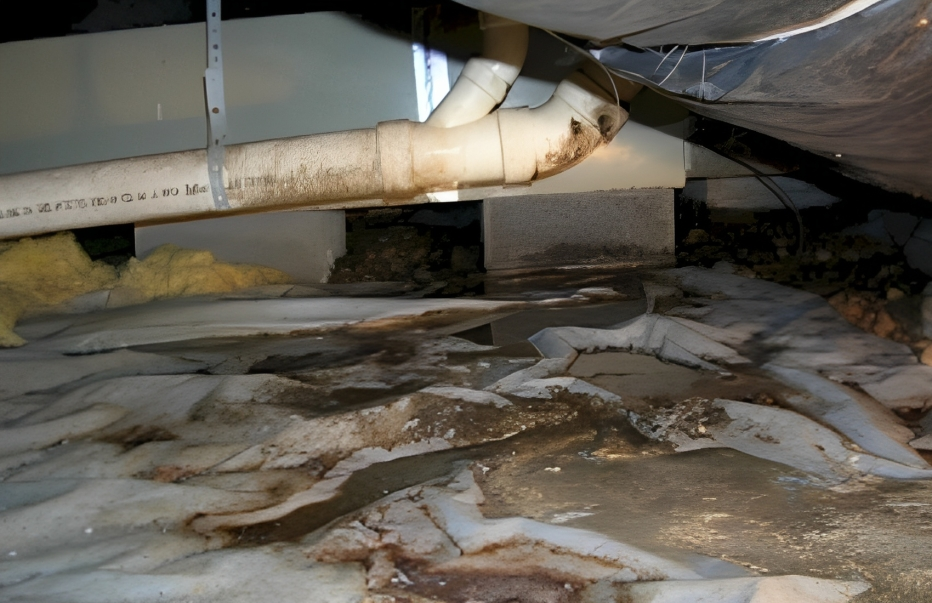A crawl space vapor barrier is an important part of keeping your home dry and comfortable. The goal of a vapor barrier is to protect your crawl space from moisture and water damage. These barriers can be made from a variety of materials depending on the type of environment you are working with and the type of insulation you are using. But, no matter which types you choose, they all serve the same purpose and can have numerous advantages in your home and in your pocket.
What Is A Crawl Space Vapor Barrier?
A crawl space vapor barrier is a moisture barrier that is placed over the ground in a crawl space to keep humidity and moisture out. The barrier is designed to trap moisture and humidity before it can enter the crawl space. This helps to keep any insulation, wood floors, and crawl space itself from becoming wet and moldy. This layer of protection helps to keep the overall space protected and helps to keep air quality higher than it would be without the barrier in place.

Why Is A Crawl Space Vapor Barrier Important?
Vapor barriers are important for several reasons, one of which is to keep the air quality of your home healthy. Without a proper barrier, moisture and humidity can enter the crawl space and cause mold and mildew to form. This can lead to poor air quality in the house as this mold and mildew can circulate through the air. Furthermore, without a proper barrier, the insulation and wood floors can become damp and wet, leading to costly replacements.
How To Install A Crawl Space Vapor Barrier?
Installing a vapor barrier in your crawl space is not difficult. First, you will need to remove any debris that is in the area and ensure that the space is thoroughly cleaned. You should then check for any holes or cracks in the walls and floor that could allow air or moisture to enter. After the area has been prepared, you can then lay down a polyethylene sheet on the floor and up the walls. This should be secured with concrete pins to prevent it from shifting. You will then need to cover the pins with plastic caps to prevent any moisture from getting in. If you have access to a commercial sealant, this can be used to further seal the edges to create a watertight environment.
Tips For Selecting The Right Crawl Space Vapor Barrier
When selecting the right vapor barrier for your crawl space, there are a few tips that you should keep in mind. First, you should consider the environment of your crawl space. If the space is located in a humid area, you may want to use a thicker barrier. If the space is more temperate, a thinner barrier may be sufficient. Additionally, you should look for a vapor barrier that is designed to be durable and moisture-resistant. There are also special types of barriers that are designed to prevent radon gas from entering the home, so if radon is a concern, you may want to look for a barrier of this type.
Types Of Crawl Space Vapor Barriers
There are several different types of crawl space vapor barriers that can be used. Polyethylene sheets are the most common type, as they are relatively inexpensive and can be easily installed with the help of concrete pins and plastic caps. Another type of barrier is tar paper, which is made from layers of asphalt-saturated paper. This type of barrier is designed to protect against moisture and is often used in places with more extreme climates. Lastly, there are also special types of vapor barriers designed to resist radon gas.
Benefits Of A Crawl Space Vapor Barrier
The benefits of using a vapor barrier in your crawl space are numerous. These barriers reduce the amount of moisture and humidity in the area, preventing mold and mildew from forming. This helps to maintain healthy air quality in the home by keeping the air clean and free of allergens. They also help to protect the insulation and wood floors, preventing them from becoming damp and wet. Finally, they provide additional insulation, helping to make your home more energy efficient.
Potential Issues With Crawl Space Vapor Barriers
Although vapor barriers can provide many benefits, there are also a few potential issues that you should be aware of. One potential issue is that the barrier may not be properly sealed, allowing air and moisture to enter the area. This is why it is important to make sure that all the edges of the barrier are properly sealed with a commercial sealant. Another potential issue is that the barrier may be too thick or too thin for the environment. This can restrict airflow and lead to inefficient DIY installation.
Conclusion
Crawl space vapor barriers are an important part of preventing air and moisture from entering the home. They provide multiple benefits, including improved air quality, improved insulation, and protection against mold and mildew. However, like any product, they can have potential issues if they are not installed correctly or if the wrong type of barrier is used. That’s why it is important to do your research and select the right type of barrier for the environment and your needs.